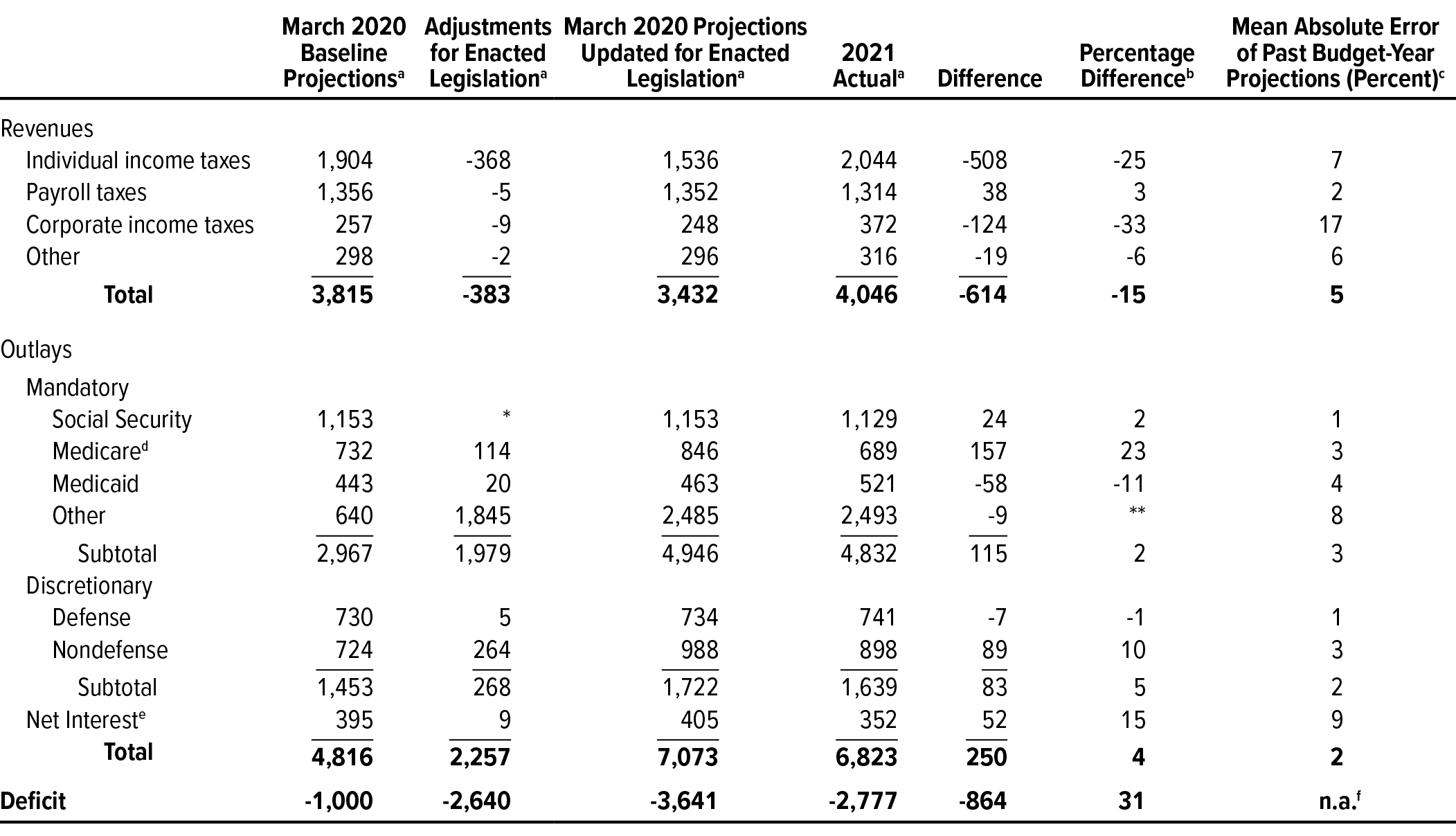Largely because of the uncertainties associated with the pandemic and the implementation of substantial legislation, some of CBO’s projections for 2021 differed from the actual results by much larger amounts than usual. Taking all adjustments into account, the overall differences were as follows (see Table 1):
- Revenues. CBO’s projection of $3.43 trillion for federal revenues in 2021 was too low—by $614 billion, or 15 percent. That difference was three times the mean absolute error of about 5 percent in revenue projections made for the years from 1983 to 2020.5
- Outlays. CBO’s projection of $7.07 trillion for federal outlays in 2021 was too high—by $250 billion, or 4 percent. That difference of 4 percent was larger than the mean absolute error of 2 percent in outlay projections made for the years from 1993 to 2020.
- Deficit. The differences in revenue and outlay projections resulted in a deficit projection for 2021 that was $864 billion more than the actual amount: $3.64 trillion rather than $2.78 trillion.6 That difference was equal to 3.9 percent of gross domestic product (GDP). By comparison, the mean absolute error in deficit projections reported for 1985 to 2020 equaled 1.0 percent of GDP.
The three categories with the largest misestimates accounted for $789 billion of the deficit difference: individual income taxes, Medicare outlays, and corporate income taxes. By far the largest difference stemmed from an underestimate of receipts from individual income taxes.
Table 1.
CBO’s Budget Projections for 2021, Compared With Actual Outcomes
Billions of Dollars
Data sources: Congressional Budget Office; Department of the Treasury. See www.cbo.gov/publication/57614#data.
Correcting misconceptions about markets, economics, asset prices, derivatives, equities, debt and finance
Wednesday, January 26, 2022
Accuracy Of CBO's Budget Projections For Fiscal Year 2021: Revenue Projections Were 15 Percent Too Low: Outlay (Expense) Projections Were 4 Percent Too High
Posted By Milton Recht
From CBO, "The Accuracy of CBO’s Budget Projections for Fiscal Year 2021:"
Subscribe to:
Post Comments (Atom)

No comments:
Post a Comment